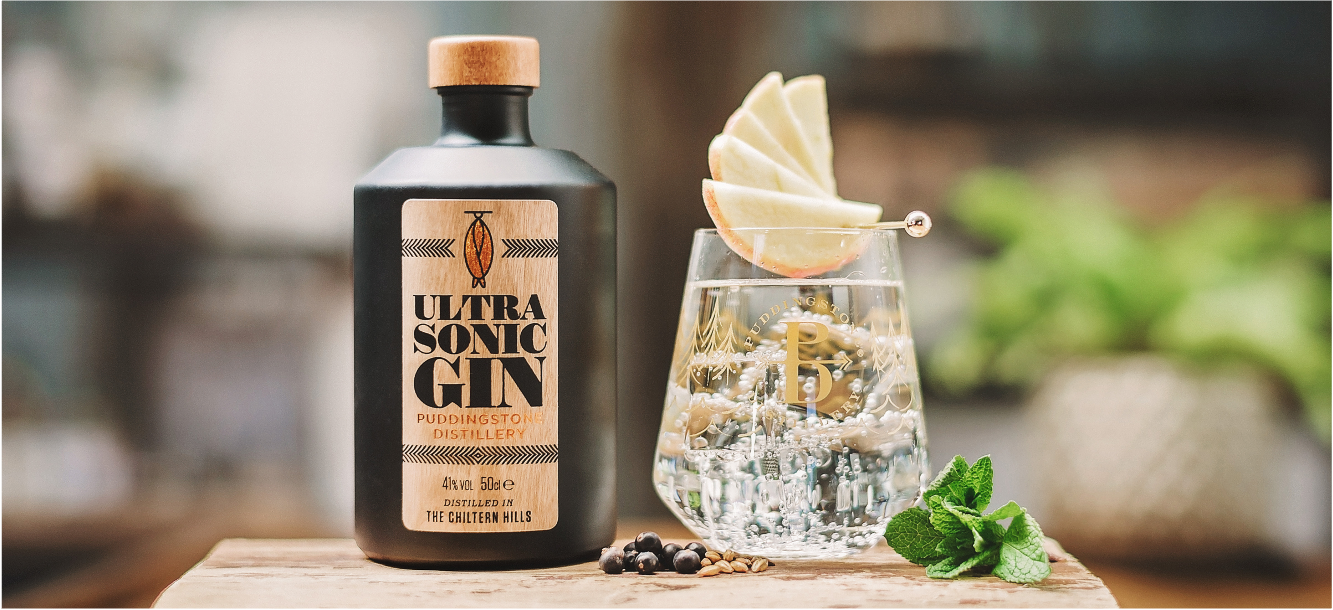|
Can you tell us more about your Ultrasonic Gin and the concept behind it? Ultrasonic Gin was created as part of our long term partnership with the Hertfordshire and Middlesex Wildlife Trust. Aside from using a selection of botanicals that a British bat might encounter on its flight the the British countryside, we also wanted to incorporate an additional connection to bats. Having read about a bourbon distillery using sub-woofers bolted to barrel ends in an attempt to accelerate the effects of barrel ageing we concluded that sound frequencies and their ability to break down matter (think cleaning engine parts or jewellery in ultrasonic baths) could be an option. What does the Ultrasonic element of the production involve and how does it work? As a process we are simply accelerating and increasing the efficiency of the effects of macerating botanicals in an alcohol/water solution prior to the distillation process. This is achieved by suspending glass vessels in an ultrasonic bath full of water. Each of the vessels contains alcohol, water and botanicals with are subjected to ultrasonic frequencies. The high range frequencies hit the botanicals and the sound energy is converted into heat energy. Within the matter of the botanicals exist micro cavities that rapidly expand and contract as heat gently warms the gases within these cavities. At a certain point the outer structure that forms the cavities weakens to the point where implosion takes places resulting in shearing forces and dramatic matter breakdown. It is this process that is responsible for the accelerated and indeed more efficient release of oils into the alcohol/water solution. How does your Ultrasonic process compare with traditional maceration? Having run organoleptic tests with samples of traditional maceration vs ultrasonic cavitation at both pre and post distillation/proofed stages we can state that the process allows for a higher finished bottle yield and notably the release of subtly different flavour profiles, especially those from what we would describe as heavier flavour and aroma notes. The process has also allowed us to reduce botanical usage by approximately 40%. The Gin Guide Review of Ultrasonic Gin: “Summery but pleasingly hearty – it’s like being sat in a country pub garden on a sunny day with an elderflower pressé and an apple crumble!” - Paul Jackson, 2022 You Might Also Like...
Comments are closed.
|


 RSS Feed
RSS Feed


